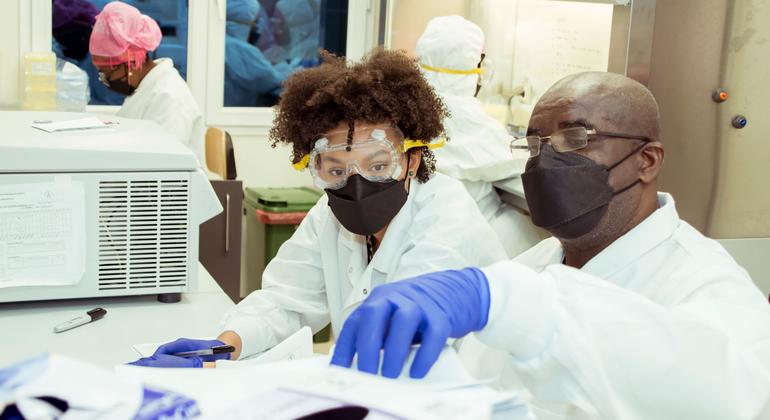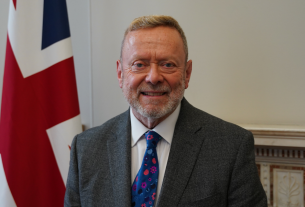Speaking to reporters in Geneva, Tedros Adhanom Ghebreyesus said that in Equatorial Guinea, WHO is on the ground supporting the outbreak response.
“We have deployed teams to assist with case finding, clinical care, logistics, and community engagement. We have also helped to establish treatment units in the affected areas,” he said.
The number of officially reported cases remains at nine, with seven deaths, in three provinces, but the fact that the provinces are 150 kilometres apart, points to “wider transmission of the virus,” Tedros said.
He also stated that WHO is aware of additional cases and has asked the Government to formally report them to WHO.
In Tanzania, where all eight reported cases are concentrated in one region, WHO and partners have offered support to the Government there, to “bridge any gaps in the response,” Tedros added.
Vaccine trials in the near future
Marburg virus disease is a severe illness from the same family as Ebola, with a fatality ratio of up to 88 per cent.
There are no vaccines as yet against the disease, but Tedros said that a WHO committee has now reviewed the evidence for four vaccines, and that the agency “is working to begin trials of vaccines and therapeutics as soon as possible”.
He also stressed that WHO was ready to work with the Governments of Equatorial Guinea and Tanzania as part of the trials, “to help prevent cases and deaths now and in future outbreaks”.
‘One Health’ response to zoonotic threat
The Marburg virus is transmitted to people from fruit bats, and Tedros called the outbreaks “another reminder” of the interconnectedness of human, animal and planet health, which required a holistic approach.
“A ‘One Health’ approach will be essential for preventing viruses from spilling over from animals to humans,” he stated, adding “that’s how many outbreaks have started, including HIV, Marburg, Ebola, avian influenza, mpox, MERS and the SARS epidemic in 2003”.
He reiterated the call which he made earlier this week together with the heads of the Food and Agriculture Organization (FAO), the UN Environment Programme (UNEP), and the World Organisation for Animal Health (WOAH) to prioritize “One Health” approaches “by strengthening the policies, strategies, plans, evidence, investment and workforce needed to properly address the threats that arise from our relationship with animals and the environment”.
Tedros also said that he was pleased to see “One Health” included as a key principle in the “zero draft” of a future agreement on pandemic prevention, preparedness and response, currently under negotiation.
As the global malaria eradication process accelerates, more countries have launched their own initiatives of elimination.
Progress in fight against malaria
Earlier on Wednesday, WHO certified Azerbaijan and Tajikistan as malaria-free. In a statement, Tedros commented on the achievement, calling it “further proof that, with the right resources and political commitment, eliminating malaria is possible,” and expressing hope that other countries could learn from their experience.
A total of 42 countries or territories have reached the malaria-free milestone so far.
Conflict injuries on the rise
WHO also sounded the alarm on Wednesday over the rise in violent injuries in conflict-affected countries, with health services overwhelmed by the needs.
The number of conflict-related deaths in 2021 increased worldwide by 46 per cent compared with a year earlier, and the agency explained that a heavy burden of injury and disability accompanied the spike in the number of people killed.
WHO said that trauma care services need to be prioritized in the Eastern Mediterranean region, where nine countries out of 22 WHO Member States, are experiencing ongoing conflict or sporadic violence.
Treated too late
“Up to 80 per cent of trauma deaths are occurring before people reach the hospital,” said Dr. Sara Halimah, Trauma Care Specialist for the WHO Eastern Mediterranean region.
“That’s a major area of concern that tells you that the civilians – the regular family in Somalia living in Mogadishu or in Afghanistan, or Sudan or wherever it may be – they are struggling to reach hospitals. They are dying on the way.”
Within the Eastern Mediterranean region, the UN agency reported that Somalia’s main hospitals recorded more than 60,000 casualties in 2022. In Syria, at least 150,000 trauma consultations took place last year, while the Occupied Palestinian Territories faced their worst year of conflict related injuries in 2022, since the last Intifada uprising ended in late 2005.
One in four of all trauma-related deaths could be avoided simply by knowing how to stem bleeding by using a tourniquet or tranexamic acid to aid clotting. Ensuring adequate access to health materials would help protect life too, as would investing in front-line staff, WHO insisted.
But such basic measures are often impossible to find in fragile and conflict-affected settings where health systems have been weakened and are unable to respond to emergencies.


